You may be wondering how you can remove water spots from porcelain sinks? Well, you no longer have to sweat over these obnoxious water stains.
What if I tell you that you could treat these hard water stains from your porcelain sinks all by yourself?
And today, let us see how to get rid of these stains with bare minimum effort.
So, let us take a look at these 13 natural and non-natural effective ways to help you remove hard water stains from your beautiful porcelain sinks.
Causes | Using Home-Made Solutions | Using Store-Bought Products | Prevent Stains
Causes of Hard Water Stains on Porcelain Sink :
Hard water stains are also familiar by the names such as limescale, calcium, or hard water deposits. Regardless of the terms, it is that stubborn white cloudy-looking buildup that accumulates on your sinks, showers, toilet bowls, washbasins, faucets, bathtubs.
We encounter hard water deposits when the tap water vaporizes, leaving the minerals behind. Later, the minerals like magnesium and calcium harden into gritty, unpleasant dirt that mar your porcelain sinks.
Even though porcelain is non-porous and durable, it is not resistant to cracks, scratches, or stains. For this reason, we need cleaning agents that will, at the same time, dissolve the minerals but do not etch the porcelain sink.
You should try to clean these watermarks as soon as they appear, as they may become permanent if left on the porcelain for too long.
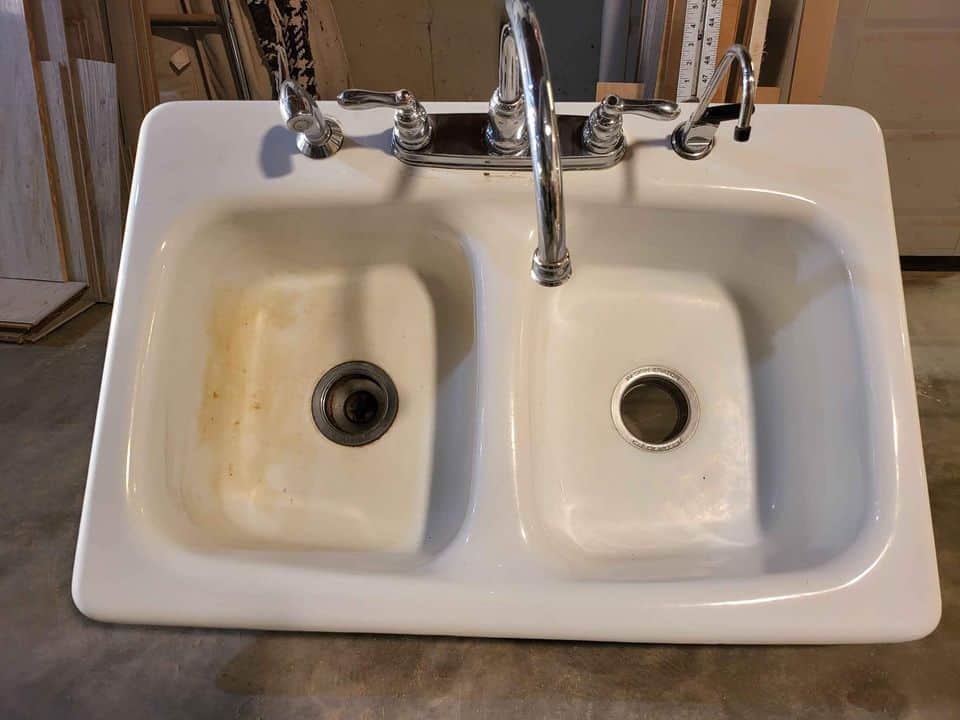
Ways to Remove Hard Water Stains from Porcelain Sinks
Hard water deposits might look difficult to clean at first. Fortunately, they are simple to fix—in fact, following the ways given below, you can clear any hard water stains, mild, moderate, or even hard stains from your porcelain.
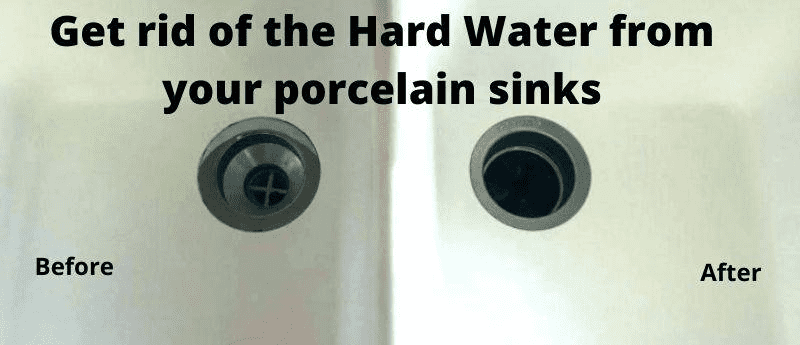
Using Home-made Solutions
Some ways to clear hard water deposits are:
White Vinegar
One of the most recommended pantry products to remove stains is vinegar. Vinegar is highly effective and safe to use while treating hard water stains or any other from your porcelain sinks.
To make the best use of vinegar,
- Begin by combining white vinegar (50%) and water (50%) and pouring it into a spray bottle. Spray the combination on the affected areas and all over the sink.
- Allow it to rest for a maximum of 15 minutes. If it is drying up, spray some more vinegar and keep it wet.
- Using a sponge or soft brush, rub gently.
- With plain water, rinse the sink.
If you can’t get a hand on white vinegar, you can always use cleaning vinegar or apple cider vinegar. Additionally, you can use this method with lemon as well. Only replace vinegar with lemon juice and repeat the process.
Baking Soda
Baking soda is a safe abrasive that helps in eliminating hard water stains. It works best when paired with the following:
With Vinegar
For tough hard water stains,
- Mix vinegar with baking soda forming a paste.
- This paste should be applied completely to the deposits and allowed to settle for about 15 minutes.
- Wipe away the paste immediately after the color changes.
- Now, thoroughly clean the sink with normal water and wipe dry.
Tip: Do not let the water settle onto the clean sink. Hence, ensure that you wipe dry as soon as you rinse the sink.
With Warm Water
For light/mild deposits,
- Make a paste mixing baking soda with warm water.
- Smear the paste on the hard water deposits and keep it for at least 5 minutes.
- Scrub it gently with a soft bristle brush and rinse with clean water.
Lemon and Salt
Readily available citric acid or lemon juice helps treat stubborn hard water stains from porcelain sinks. In addition, give the sink a radiant shine.
- Cut the lemon into equal halves and dip it into salt.
- Then, scrub the hard water stain away with the salt-dipped lemon.
- Once done, form a paste with lemon juice and salt and apply it over the hard water stains.
- For best results, let the paste rest for 30 minutes to an hour.
- And scrub with a non-abrasive sponge.
- Lastly, rinse and wipe dry the sink.
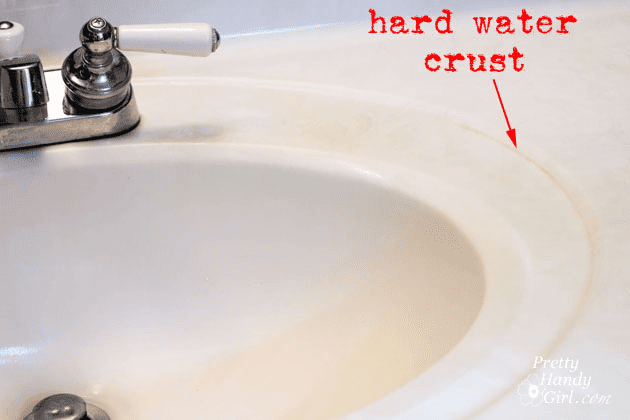
Hydrogen Peroxide
Hydrogen peroxide is an oxygen bleach suggested safe to remove hard water stains from white porcelain sinks. This oxygen bleach does wonder in cleaning porcelain sinks, yet, when paired with cream of tartar maximizes its cleaning ability.
With the Cream of Tartar
To make this method work,
- Put on gloves and combine equal amounts of hydrogen peroxide and cream of tartar.
- For instance, mix 3 parts of hydrogen peroxide with 3 parts of tartar.
- Put this mixture onto the affected areas using a cloth or soft sponge.
- Gently scrub the mixture in circular motions for 5 minutes and rest it for approximately 10 minutes.
- Wipe away any bleach sticking to the porcelain and rinse the porcelain sink thoroughly after 10 minutes.
Caution: Always wear gloves, goggles, and a dust mask when handling bleach.
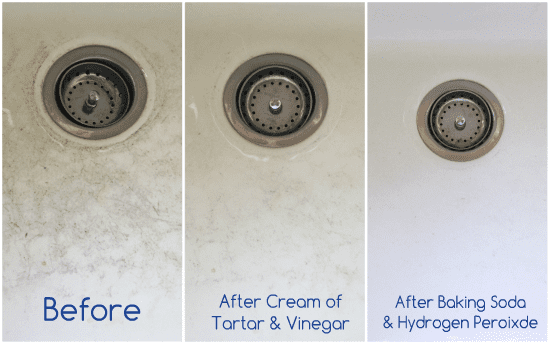
A Pumice Stone or Stick
Another easy way is to use a pumice stone on your sink. The gritty surface of pumice eliminates the calcium and mineral deposits build on the sink. Additionally, it is safe to use on porcelain as it won’t scratch or damage it.
While using pumice,
- Firstly, wash the sink with dish soap and warm water to get rid of any food buildup of gunk.
- Wet the pumice stone or stick and start scrubbing.
- After a while, it will form a paste that will lift the stains.
- Once the stains get lifted, wipe away the paste and rinse the sink surface with plain water.
Note: Do not use dry pumice on porcelain surfaces because it can scratch the porcelain.
White Wine Vinegar
Using white wine vinegar might seem an odd method, but some people have used this method to get rid of the limescale deposits on the porcelain sinks.
- Soak some paper towels with white wine vinegar.
- Apply these soaked towels onto the hard water stains and let them rest for a few hours.
- Wipe clean and rinse.
Using Store-Bought Products
As we have already seen the natural ways, you might have noticed that it takes time for them to show their effect. On the contrary, the following non-natural products wipe away the white chalky gunk in no time.
Even though the chemicals are safe to use, they may damage your porcelain sinks. So, use caution.
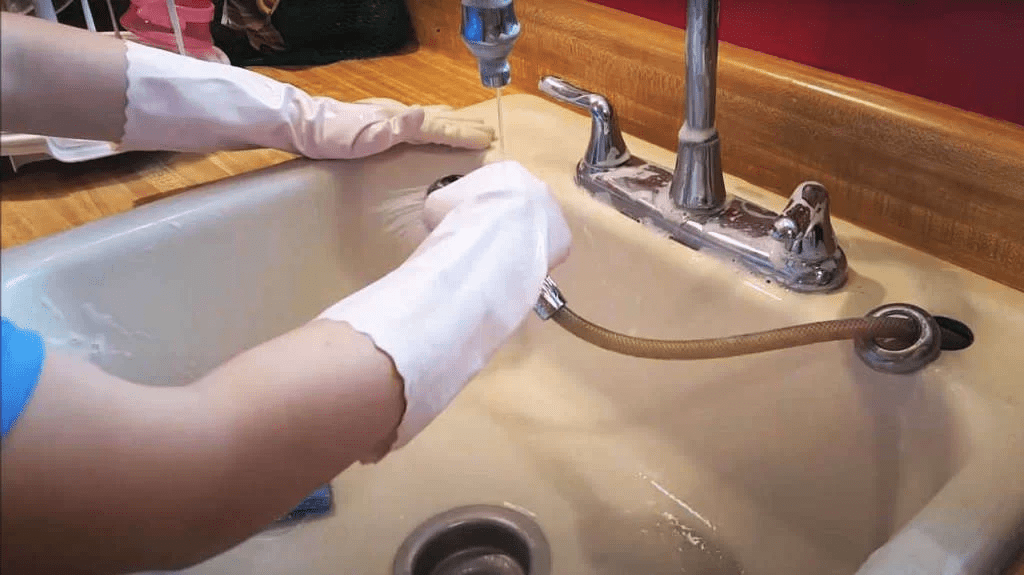
Caution: Always use safety precautions while using chemical-based products. For example, use gloves, goggles, and even dust masks while handling the below-given products.
Limescale Remover -CLR
An effective limescale remover is CLR. CLR works well because it quickly dissolves the calcium, magnesium, or other mineral deposits from your porcelain sinks.
Now, before using CLR, make sure the room is perfectly ventilated.
- Combining CLR with warm water in equal parts as per the product’s instructions
- Apply the mixture using a cloth, towel, or sponge over the limescale deposits.
- Within 2 minutes of application, immediately wash it with cold water.
Note: Do not let it rest for more than 2 minutes.
Bar Keeper’s Friend or BKF
With this cleaner, you can remove stains from porcelain sinks caused by hard water, rust, or mineral deposits
To use BKF for hard water deposits,
- Wet the stained surface.
- Apply BKF entirely over the affected areas.
- Gently scrub the stain with a soft cloth or non-abrasive sponge.
- After a minute of gentle scrubbing, wash the sink with plain water and wipe dry.
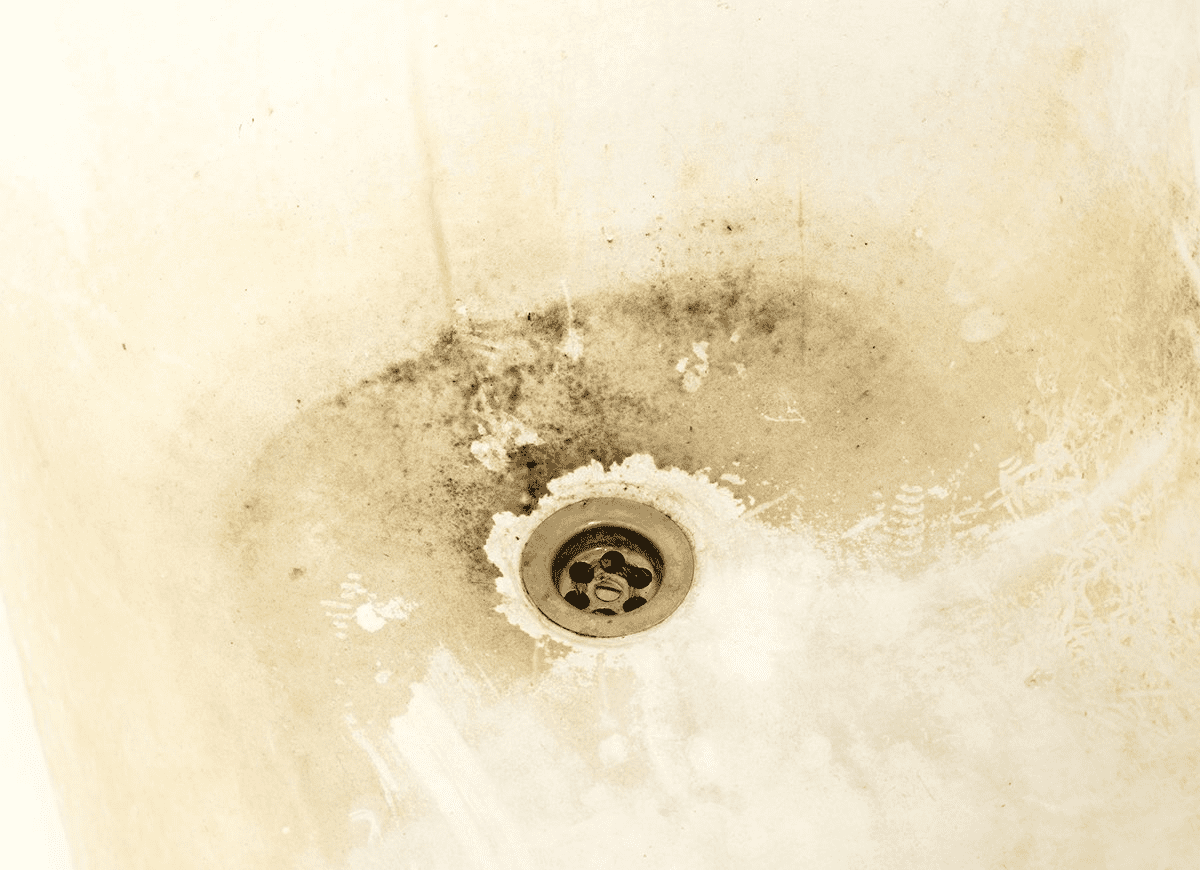
Lime A-Way
Lime A-way is the fastest, easiest, and best spray cleaner for eliminating calcium, limescale deposits from your sinks.
While using Lime A-way,
- Gloves, goggles, and masks are a must.
- This cleaner works within a minute.
- Spray the cleaner over the porcelain sink and after a minute, wipe clean.
- Rinse thoroughly and dry the sink.
WD-40
Another multi-use product for porcelain stains is WD-40. It can remove tough hard water stains from the porcelain sinks.
To use WD-40,
- Spray the cleaner over the affected areas.
- Gently rub with a non-abrasive sponge and elbow grease.
- Wipe it away within a minute of application.
Zep Calcium, Lime, and Rust Remover
Zep calcium, lime, and rust stain remover will help you clear the stubborn stains that are longing into your porcelain sinks.
To use Zep,
- Combine this stain remover with warm water in the ratio of 1:1.
- With a non-abrasive sponge or cloth, apply the mix to the stained surfaces.
- Within 60 seconds, wash the sink with clean water.
- For tough stains, repeat the process.
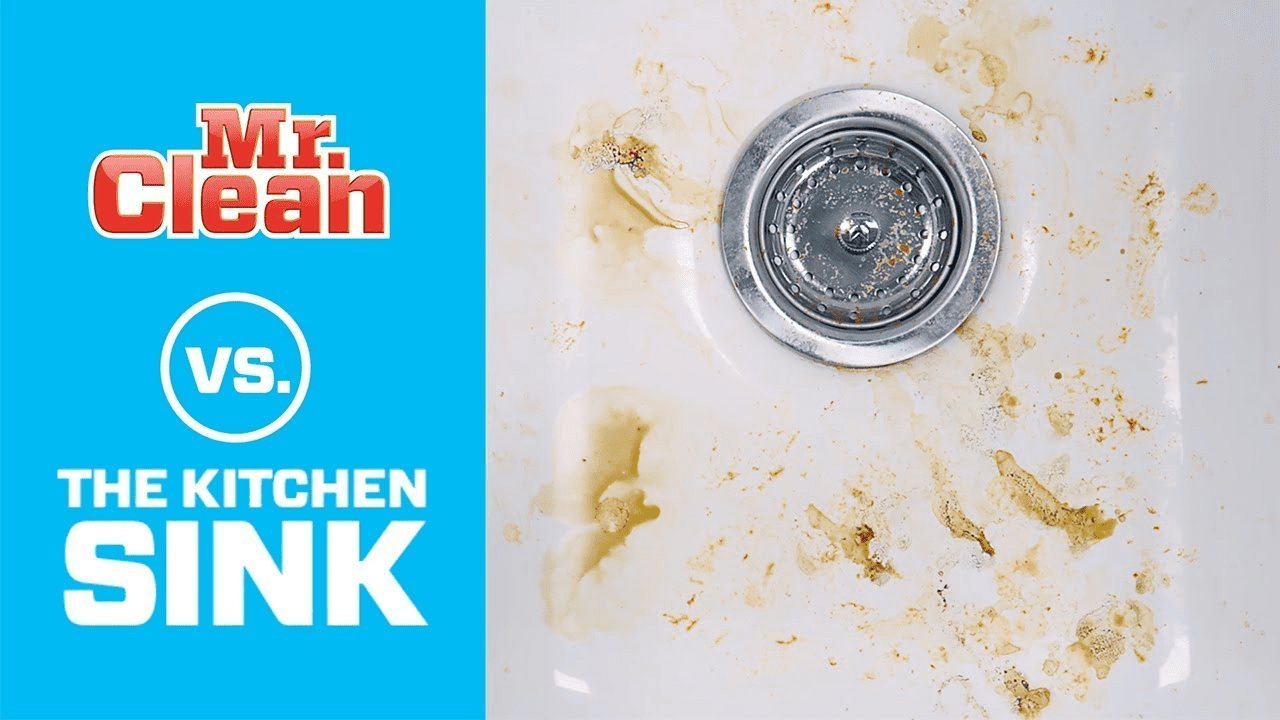
Magic Erasers
As the name suggests, they magically erase the tough stain from the porcelain surface. Magic erasers are simple-to-use and safe. You can keep hard water stains at bay with this product.
- Wet the magic eraser with water.
- Squeeze out extra water from the eraser.
- Start scrubbing gently.

Tips to Prevent Hard Water Deposits
To prevent hard water stains, you have to keep these points in mind if you have a hard water source at your home.
- Try to keep the surfaces dry when not in use.
- Clean the sinks, bathtubs, and toilet bowls regularly.
- Try deep cleaning once every 15 days or a month.
- Try to get a hand at water softeners.
Lastly, try preventing the water deposits using these tips but, if not, you can always use the above ways to keep your porcelain sinks clean, shining, and fresh. Happy and Safe cleaning!

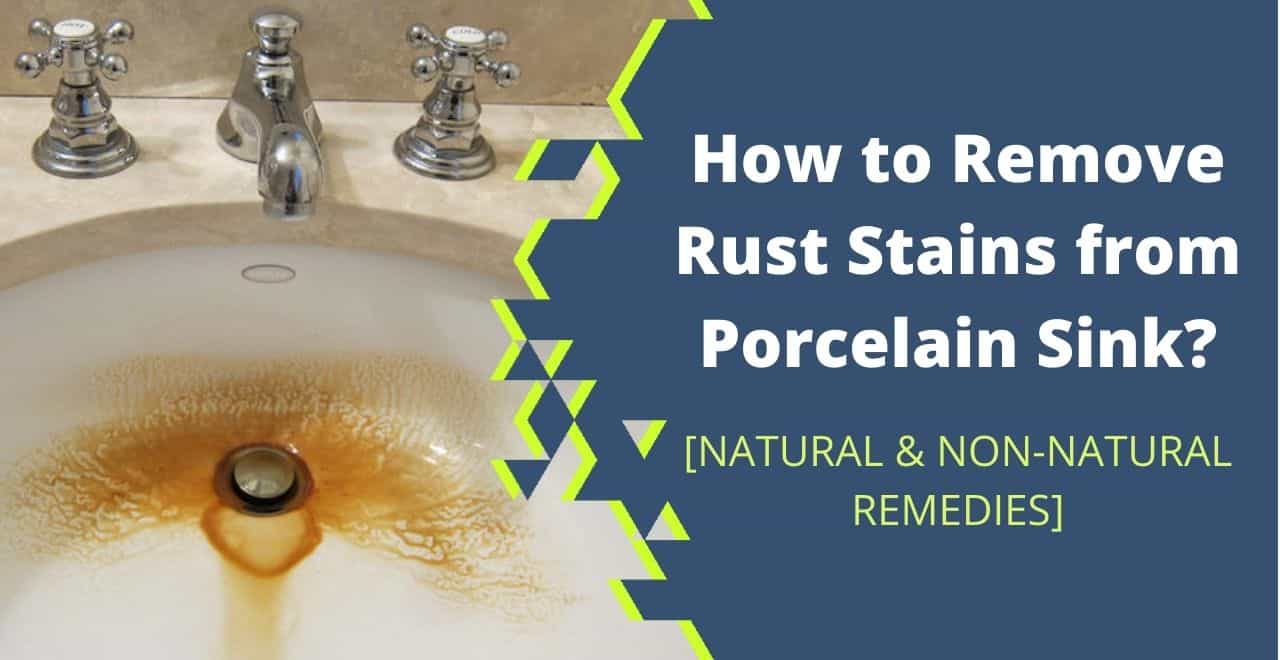

![Granite Vs. Marble Vs. Quartz Countertops [12 Differences+Pros & Cons] Granite Vs. Marble Vs. Quartz Countertops [12 Differences+Pros & Cons]](https://houseadorable.com/wp-content/uploads/2022/03/quartz-marble.jpg)
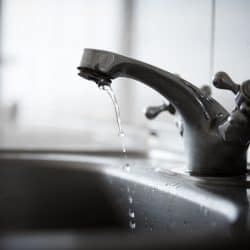
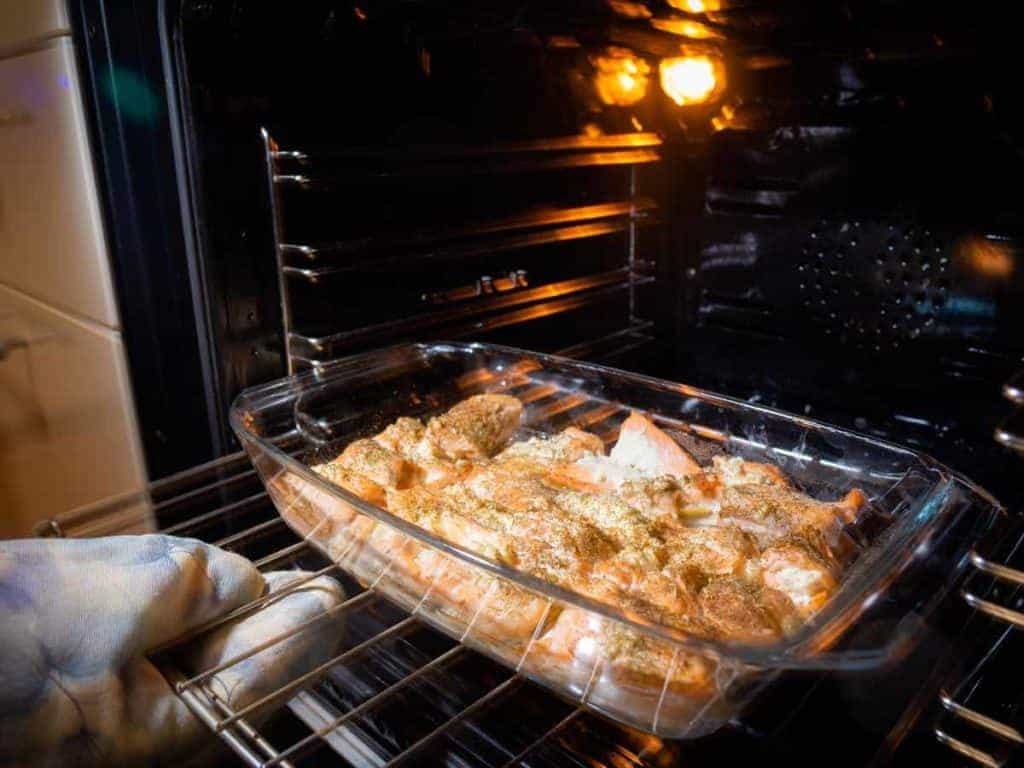
![[A] Water Heater Not Heating After Replacing Elements and Thermostat [A] Water Heater Not Heating After Replacing Elements and Thermostat](https://houseadorable.com/wp-content/uploads/2023/08/water-heater-not-heating-after-replacing-elements-1-250x250.png)
![How To Care For Bamboo Cutting Board? [Steps+Tips Explained] How To Care For Bamboo Cutting Board? [Steps+Tips Explained]](https://houseadorable.com/wp-content/uploads/2022/12/Bamboo_Heat_Resistant_1.jpg)